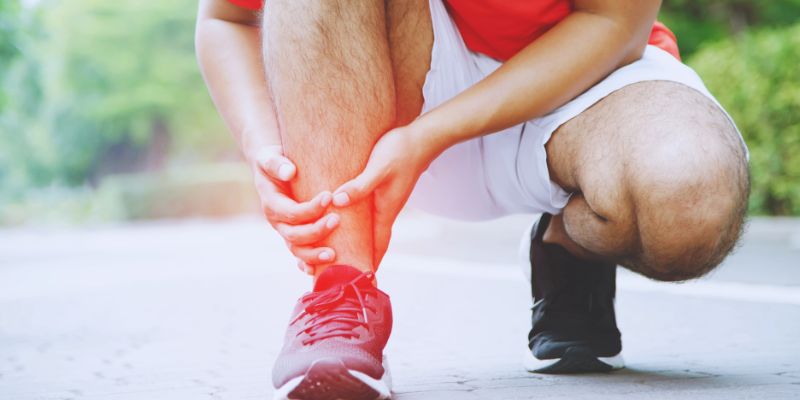Leg Pain When Walking: Understanding the Causes and When to Seek Help
Leg pain linked to walking can be unpleasant and disruptive. It could start as a little soreness but develop worse with time. Some people find great agony, burning, or cramps with every step. These aches could make daily chores difficult. Many individuals ignore the agony in the hope it will go away, but it could point to a serious problem. Illnesses such as sciatica, arthritis, or peripheral artery disease (PAD) can cause leg pain.
Ignoring signs could lead to trouble. Early identification of the source will enable more issues to be avoided. Some circumstances call for basic remedies; others necessitate medical intervention. Find out why your walking makes your legs hurt. This guide lists common causes of leg pain, easily available treatments, and warning signs demanding medical care.

Causes of Leg Pain When Walking
Below are the common causes of leg pain when walking, ranging from muscle issues to serious medical conditions requiring treatment.
Peripheral Artery Disease (PAD)
PAD results from the narrowing of the arteries of the legs brought on by plaque buildup. It reduces blood flow, so the legs find it difficult to get enough oxygen. Walking can thus cause a heavy feeling, soreness, or leg cramps. Although it comes back with activity, resting usually helps the pain to pass. Further PAD symptoms include weak leg pulses, slow-healing wounds, and cold feet. If untreated, PAD can cause ulceration or infections, among other severe issues. Among the few viable therapies include medications, changes in lifestyle, and, in extreme cases, surgery to restore blood flow.
Muscle Cramps and Strains
Extreme pain arises from suddenly squeezed muscles producing cramps. Muscle exhaustion, poor circulation, or dehydration could all lead to these cramps. While some people experience cramps walking, others start them at night. Either too extreme stretching or tearing of a muscle causes a muscular strain. Exercise, improper motions, or weak muscles can bring this on. Strains cause edema, discomfort, and difficulties in leg mobility. Part of the treatment consists of rest, water, light stretching, and using heat or cold packs on the affected area.
Sciatica
With sciatica, the sciatic nerve—which runs from the lower back to the legs—becomes inflamed or restricted. Usually, this follows from a herniated disc or spinal problem. Apart from severe shooting pain down the leg, those with sciatica occasionally experience numbness, tingling, or weakness. Walking might increase discomfort and complicate daily chores. Treatment for sciatica consists of rest, physical therapy, medicines, and a little stretching. Under extreme conditions, doctors could recommend surgery to relieve nerve pressure.

Arthritis
Arthritis compromises the joints, causing leg swelling, discomfort, and stiffness. The most often occurring kind is osteoarthritis, which results from the gradual degradation of the joint's cartilage. It causes friction between bones, which causes walking discomfort. Rheumatoid arthritis is another condition that triggers joint inflammation, pain, and stiffness. Those with arthritis sometimes find that their pain is worse first thing in the morning or following extended exercise. Medications, physical therapy, joint-friendly activities, and occasionally surgery for severe instances constitute the available treatment choices.
Deep Vein Thrombosis (DVT)
Deep leg vein blood clots cause the severe condition known as DVT. The injured leg becomes red, swollen, and painful as the clot restricts regular blood flow. Walking could aggravate the pain, and occasionally, the clot breaks free and passes to the lungs, causing a potentially fatal illness known as pulmonary embolism. Those who sit for extended periods recently underwent surgery, or have blood clotting problems are among those more likely to get DVT. One needs immediate medical attention. To stop future clots, doctors could advise lifestyle modifications and prescribe blood thinners.
When to Seek Medical Help
Though some symptoms call for medical treatment, leg discomfort is occasionally moderate and transient. One should not overlook severe, abrupt, or ongoing pain. If your leg discomfort aggravates with movement or fails to ease with rest, it could point to an underlying problem. Other warning indicators of deep vein thrombosis (DVT) include leg edema, redness, or warmth. Leg numbing, tingling, or weakness could indicate sciatica or nerve injury. If you find fluctuations in foot temperature, slow-healing wounds, or skin discoloration, peripheral artery disease (PAD) may be the source.
If the discomfort interferes with daily activities or limits movement, one should also contact a doctor. Delaying treatment could cause problems, complicating recuperation. Early diagnosis increases quality of life and helps avoid major issues. If you have any of these symptoms, see a medical practitioner for assessment and suitable treatment advice. Getting early medical attention guarantees improved results and relief.
Medical Treatments for Leg Pain
Medical interventions for leg discomfort during walking rely on the underlying reason. Doctors might advise medications, physical therapy, or surgery for alleviation. Doctors frequently administer blood thinners or cholesterol-lowering medications to increase circulation in cases with peripheral arterial disease (PAD). Changes in lifestyle could also assist, such as giving up smoking and working out. Physical therapy, muscular relaxants, or anti-inflammatory medications alleviate sciatica and nerve-related discomfort. Severe cases could call for surgery to release nerve compression.
Doctors could advise painkillers, corticosteroid injections, or joint-friendly workouts for leg pain connected to arthritis. Deep vein thrombosis (DVT) calls for blood thinners to stop clots from getting worse. If the clot is sizable, doctors can decide to remove it through surgery. Sometimes, bespoke shoe inserts, compression stockings, or orthopedic equipment help ease discomfort. An additional medical assessment is required if leg discomfort lasts even with treatment. Professional treatment guarantees correct diagnosis and efficient relief.
Conclusion:
Walking-related leg pain can be anything from slight discomfort to a sign of a major medical disorder. Ignoring the symptoms could cause consequences compromising mobility and quality of life. Disorders including PAD, sciatica, arthritis, and DVT call for correct diagnosis and quick treatment. Some cases go better with rest and home treatments; others call for professional help. If your limb trouble worsens, persists, or interferes with daily activities, see a doctor. Early therapy enhances general well-being and helps to avoid major issues. Better mobility and pain relief follow from knowing the source and getting care when necessary.












